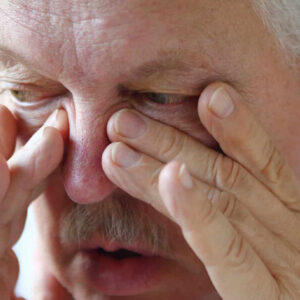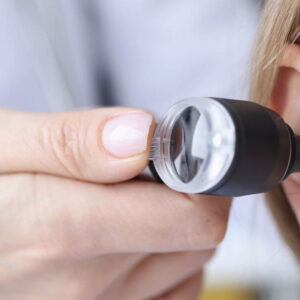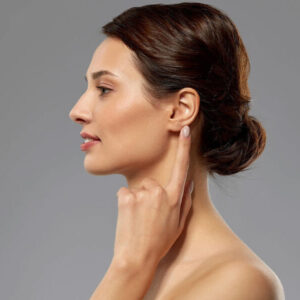
“Eardrum Surgery”: Ears’ health is one of the most important factors directly affecting overall quality of life. Damage to the eardrum in particular can lead both to hearing loss and to recurrent ear infections, causing serious health problems. Eardrum surgery—known in medical terminology as “myringoplasty,” or more extensively as “tympanoplasty”—is performed to repair such damage to the eardrum.
In Istanbul, ENT specialist Prof. Dr. Ozan Seymen—who serves patients in his own clinic—offers safe, successful, and lasting solutions using modern surgical techniques and a personalized approach.
In this article, we will examine in detail what eardrum surgery is, why it’s necessary, how it’s performed, who is a candidate, and what the postoperative recovery process looks like.
What Is the Eardrum and What Are Its Functions?
The eardrum (tympanic membrane) is a thin, flexible, semi-transparent tissue located at the end of the external ear canal.
Its primary functions are:
- Sound Transmission: Conducts incoming sound waves to the ossicles in the middle ear, initiating the hearing process.
- Protective Barrier: Prevents bacteria, water, and other foreign substances from entering the middle ear, protecting against infection.
Thanks to these vital roles, the eardrum is critical both for hearing health and for maintaining the integrity of the middle ear.
Eardrum Injuries and Their Causes
Tears, perforations, or weakening of the eardrum can occur for various reasons:
- Recurrent ear infections (otitis media)
- Severe trauma (blows to the ear, explosions, etc.)
- Sudden pressure changes (air travel, diving, etc.)
- Exposure to loud noise
- Incorrect ear cleaning (using cotton swabs, etc.)
Symptoms typically include hearing loss, ear discharge, and frequent infections.
Prof. Dr. Ozan Seymen evaluates these injuries with detailed otoscopic examination and hearing tests to determine the most suitable treatment.
What Is Eardrum Surgery?
Eardrum surgery is the surgical repair of a damaged or perforated eardrum.
The goals of the procedure are to:
- Restore the integrity of the eardrum,
- Prevent middle ear infections,
- Correct hearing loss.
Depending on the size of the defect and the condition of the middle-ear structures, the operation may be limited to eardrum repair (myringoplasty) or may also involve reconstruction of the ossicular chain (tympanoplasty).
Prof. Dr. Ozan Seymen applies the latest surgical techniques and individualized treatment protocols with high success rates.
Why Is Eardrum Surgery Performed?
The main indications for eardrum surgery are:
- Preventing or correcting permanent hearing loss
- Stopping recurrent ear infections
- Protecting middle and inner ear health
- Eliminating persistent ear discharge and odor
- Creating a watertight ear (important for patients who swim, etc.)
Prof. Dr. Ozan Seymen determines surgical indications carefully after thorough examination and tests.
Who Is a Candidate for Eardrum Surgery?
Suitable candidates include:
- Individuals with a persistent perforation or tear of the eardrum
- Patients experiencing recurrent middle-ear infections
- Those complaining of hearing loss
- Individuals with continuous ear discharge
- Patients whose eardrum was damaged by trauma or pressure changes
It is also essential that there be no active infection at the time of surgery; any infection is treated first, then surgery is scheduled.
Prof. Dr. Ozan Seymen determines candidacy according to scientific criteria after comprehensive evaluation.
How Is Eardrum Surgery Performed?
Eardrum surgery (myringoplasty or tympanoplasty) is done under local or general anesthesia and typically takes 1–2 hours.
The main steps are:
- Surgical Approach: A small incision is made either in the ear canal or behind the ear.
- Graft Preparation: A graft—usually from the patient’s own tissue (e.g., fascia from behind the ear or cartilage)—is harvested to close the perforation.
- Repair: The graft is carefully placed over the perforation. If the ossicles are damaged, they may be repaired or supported.
- Closure: The surgical site is dressed with specialized packing material to support healing.
Prof. Dr. Ozan Seymen prefers minimally invasive techniques to accelerate recovery and preserve aesthetics.
Postoperative Recovery
Recovery varies by patient health and procedure scope, but most patients are discharged the same day.
Typical recovery milestones:
- First days: Mild pain, fullness in the ear, and temporary hearing reduction may occur.
- First week: Light discharge and seepage are normal; prescribed antibiotics and pain relievers must be taken as directed.
- First 2–3 weeks: Avoid water exposure—protect the ear when bathing, and refrain from swimming.
- Follow-ups: First check at postoperative days 7–10 to change dressings and assess healing.
- Total healing time: Full eardrum closure and hearing improvement can take 6–8 weeks.
Prof. Dr. Ozan Seymen closely monitors each patient’s healing and provides support at every stage.
Risks and Complications
Eardrum surgery is generally safe, but—as with any operation—rare risks include:
- Infection
- Bleeding
- Re-perforation of the eardrum
- Incomplete hearing improvement
- Persistent fullness or mild dizziness
Modern sterile techniques and meticulous care minimize these risks.
Success Rates and Durability
Success rates are very high:
- Small to medium perforations: 90–95% closure rate
- Larger defects or additional middle-ear issues: slightly lower but still very high
With proper care, the repaired eardrum remains durable for many years, restoring hearing and reducing infection risk.
Prof. Dr. Ozan Seymen aims for long-term success, ensuring a healthy, lasting result.
Pricing
Costs vary based on:
- Procedure extent (myringoplasty vs. tympanoplasty)
- Graft material and surgical technique
- Surgeon’s experience
- Anesthesia type
- Clinic facilities and service standards
In Istanbul, Prof. Dr. Ozan Seymen offers transparent, individualized pricing that includes hospital stay, medications, and follow-ups.
Is Eardrum Surgery Painful?
No—anesthesia prevents pain during the procedure. Postoperative discomfort is mild and easily managed with analgesics.
Does Hearing Improve Immediately?
Full healing takes 6–8 weeks; hearing improvement is gradual.
Can the Eardrum Perforate Again?
With proper care, the new eardrum remains intact for years, though severe trauma or infection could cause re-injury.
When Can I Bathe?
Avoid water exposure for 3–4 weeks. Your surgeon will clear you after assessing healing.
When Can I Fly?
Avoid air travel for the first few weeks to prevent pressure-related issues; flying is allowed once healing is sufficient.
Eardrum surgery offers a safe, effective, and lasting solution for hearing loss, recurrent infections, and other ear problems. When performed with modern techniques, most patients achieve excellent results and regain healthy hearing.
If you’re ready to take an effective step towards better ear health, improved hearing, and freedom from recurring issues, contact Prof. Dr. Ozan Seymen for detailed information and a personalized treatment plan.









 Türkçe
Türkçe Français
Français Deutsch
Deutsch